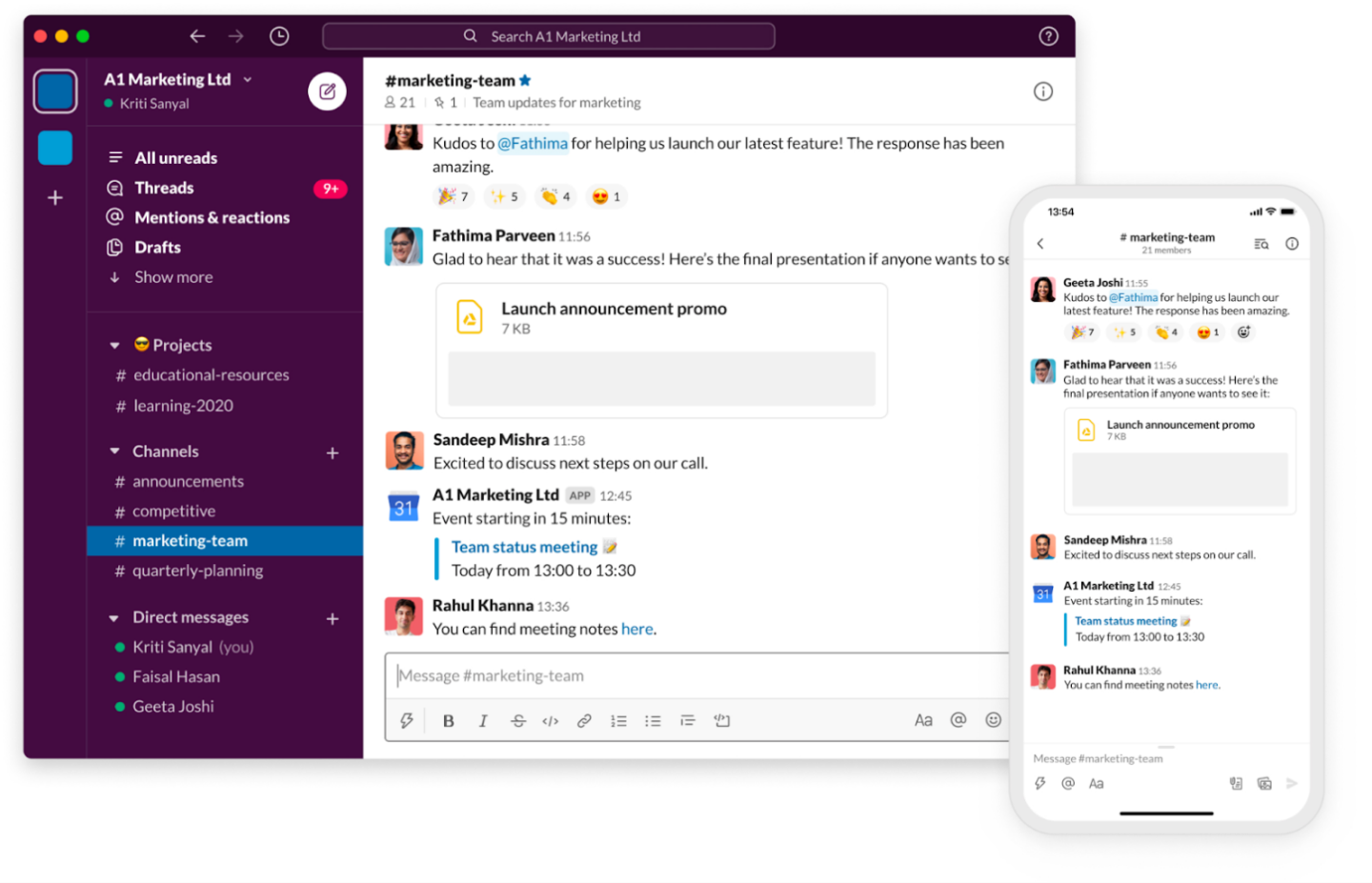Valuable Hints to the Beneficial Customer Feedback Analysis

Being able to comprehend and reflect on the voices of your clients is an integral part of improvement that concerns the business you do. However, a large proportion of the people pay more attention to their own understanding of what is going on instead of analyzing what opinions the clients have expressed, even though they generally agree with the notion that getting insightful feedback from their clients is important. But why?
The answer is quite simple: it is challenging to consistently get useful information from the provided feedback. Nevertheless, the clients’ opinions indeed remain in the field of the most important aspects of getting things done more effectively in your business, including dealing with customer requests and improving the overall business strategy. Clear feedback allows for strategizing instead of following one’s own intuition; it gives an innate perception of the right direction and maybe even a reality check.
But how do I navigate the abundance of information my business receives on a daily basis? In this guide, we will answer this question and walk our readers through the path of data analysis optimization, especially when one tries putting the customers’ opinions to good use with managing your enterprise.
The rationale of examining client feedback
An efficient feedback loop consists of going through clients’ opinions, which puts the process of business improvement in motion. That is crucial in understanding why getting feedback from a client is something you should consider and opt for receiving in general. If you want to enhance and reinforce the trajectory of your business strategy, this is a vital thing to do.
Imagine some kind of situation: you are making plans for the upcoming quarter. Your impulse might lead in the direction of, for example, upgrading the dashboard you use for reporting as the primary objective. Don’t get the wrong idea; this is a good proposition, but is this really the right field you should invest your efforts in? Does it encourage and somehow promote fruitful development? Does it improve the customer experience? Does it boost your clients’ success?
At this moment in time, you may give in to such a logical fallacy as confirmation bias. On a subconscious level, you might prioritize the “convenient” client review that goes in line with your strategy and ignore the “inconvenient” data. You can succumb to looking for the customer responses that will only support the set strategy you already have. The better route is to first analyze the feedback that you have and only then come up with a proposition based on the conclusions you reached during your research. Let’s say you outlined the following main themes:
- Clients are upset that the assistance they get is inconsistent.
- The demands for integrations are being repeatedly ignored.
- People are leaving your company because the value of your goods or services is unclear to them.
This information will help you create meaningful hypotheses and move on to experimenting with what works best for your target audience in all aspects of your business.
While improving the reporting dashboard could help resolve the third issue, the project might require a long time to carry out. It might turn out to be more fruitful to engage your client success managers in the product value explanation through data first. Should it be a success, you will be more comfortable with moving on to the correct representation of the data in the reporting dashboard, which will strengthen the favorable reaction.
The gist of the matter is that you should be placing the clients’ opinions in the foreground and not overlooking them when it is connected with the issue linked to your business strategy. It will assist you in narrowing the scope of your problems and outlining the focal points of improvement.
There are numerous other advantages to prioritizing client feedback:
- It focuses discussions on the needs of the clients. Loud voices can easily distract you, but customer feedback helps to avoid it. Consumers’ opinions allow businesses to retain their client-oriented approach and keep the standards for customer service high. This, in turn, will most likely lead to higher net income.
- You gain your consumers’ trust. Showing that you have done your research builds confidence among your clients. Actually, 83% of consumers confirm that they are more likely to stay loyal to businesses that take their opinions into account and act on them.
- It is a learning opportunity. Conducting subject-specific research before each and every decision you make is, frankly, impractical, unproductive, and tedious. By integrating feedback analysis into your list of tasks, you will remain updated on what the consumers think.
Key actions to evaluating consumer feedback
Reflecting and interpreting the complaints and praises your clients have given you involves gathering both numerical and interpretivist subjective data and turning them into concise and logical information regarding your goods or services.
Simply put, it lets you actually use the insights, figures, and reflections you have collected throughout your various means of gathering feedback.
Efficient analysis of feedback is consecutive and methodical. Here is a template for optimizing the process. Feel free to take it; modify it to fit your specific business and find a way that it would be the most beneficial to your enterprise.
Step 1: Gather information from every channel in one location
First, compile information from each source you have and consolidate it in a single repository. Direct consumer interviews, client surveys, and social media are just a few examples of where you might be getting your information.
This makes accessing the quantitative input (ratings, for instance) and qualitative data (user comments, for instance) much easier in the future.
Your preferred way of keeping the data may be determined by the amount of information you need to organize as well as your team’s resources. There are, of course, many affordable media, such as Excel, Google Sheets, and Miro. Although these instruments are cost-effective, they also need much more hand labor and energy.
Though teams with more resources and a higher workload usually employ feedback analysis software, we will discuss how you can perform it yourself. Sure, the technical innovations help to automate some simple tasks and improve the process consistency, although it surely is not the end of the world if you cannot afford it yet.
When collecting data, take into account the following sources:
- Interviews with users. Speaking with your clients is the most straightforward (and most likely costly) way of getting their opinions. You have an opportunity to let the customers explain their experience of using your product and ask their opinion on certain aspects of their experience. By seeing them engage in the usage of your product, you can conduct a usability test.
- Slack. Slack is a useful tool for gathering information across team members and questionnaires in one place. It is a great way for your managers to display clients’ feedback for the entire team.


- Customer satisfaction scores, or CSAT. Due to its simplicity and the wide usability, CSAT usually dominates consumer surveys. Usedesk provides you with the necessary tools for efficiently evaluating your CSAT results inside the happiness report.
- Social media. Getting comments from social media provides instantaneous understanding of consumer impressions of your enterprise. Social listening software lets you keep an eye on the users’ interactions with your social media.
- Forums. They give you an opportunity to view your company’s public image on a larger scale. Forums also provide insightful opinions from those who are actively involved with your enterprise.
- In-app surveys. Short, focused questionnaires can be built into your app so that you receive comments from users as they are active within your product. Usedesk makes it easy to incorporate proactive messages that will be delivered to people no matter where on your website they currently may be.
- NPS polls. The Net Promoter Score reflects the degree to which your clients feel about promoting the products made by your business to people who are not yet users.
- Support inboxes. It is a very useful tool to grasp the clients desires and expectations better. People who contact your business with a problem or a question inadvertently show you where they are having trouble and a way to increase the quality of your product and the guide that will delve into the insightful strategies of making your enterprise better.
Step 2: Look at the opinions your clients have gently shared with you
After you have brought all the data into one repository, it is high time to study it.
At this point, everything comes to light—the positive, the negative, everything. It is crucial to remain open-minded, no matter how unpleasant some comments may get. You are here for insight, after all.
This move should be broken down to three stages: classification, analysis, and prioritizing.
Classification is an essential part of this reflection and learning routine.
At this point, the puzzles start coming together, and you can discern certain tendencies and hints. You can add dimension to your research using various labels and tags to feature a quality overview of the data you have been presented.
Classification is a sort of niche language that your team develops while analyzing the opinions of your clients.
Stemming from the intended use for the information, support members may classify the tickets through a system of tags—for instance, for working on enhancing client support offices. Although this taxonomy is applicable to nuanced aspects of the consumer’s behavior and support department, it may appear to be irrelevant for the product team, whose task it is to arrange the comments in accordance with client groups.
The goal of classifying the information lies in the production of the system that would be clear to everyone in your company, regardless of who the current viewer is.
Organizing the feedback into the right categories helps to contextualize each theme more and prioritize discussions. The optimal strategy involves the review and reflection on the complex issues instead of trying to draw upon the certain qualities of your product that happen to stand out.
When you try to arrange and orderly put the reviews and responses from your consumers, you may consider the following areas:
- Users: the language they use, the subscription plans, average spendings and the market segment of their choice;
- Thematic area: content filtering and pricing, improvements to the dashboard, customer service quality, product’s quality elevation;
- Plan: what will happen/be done this moment, next month, later, be put on hold;
- Using keywords: “best tickets”, “cheapest tickets”, “lovely place”, “book a tour”;
- Sources: surveys in the app, mass media, tickets from the support, third-party reviews, customer service feedback, direct user interviews;
- Feelings: users who feel positive about the product feel negative about it or feel neutral;
- Staff: feedback from the employees—sales department, SMM department, clients management department;
When you try to do the feedback analysis manually, you cannot do it properly that way. It should become an essential part of the teamwork and therefore become integrated into the employee’s routine. The employees should tag the inputs and make repositories for all the diverse types of feedback.
If you already have the suitable theme or a concept to link the feedback to, then feel free to assign what has been heard to the special category. This will highly likely increase the problem-solving skills the enterprise can fathom, enhancing the speed of the solution and its efficiency. Seeing the core values and potential benefits hidden in your product will assist the clients when they use your product and make you think about the constant progress of your service. If you happen to struggle with the data collection and everything seems to sink into one large repository, do not fear this natural process of learning. Routine will likely help you categorize the feedback better.
Dealing with an overwhelming volume of data requires opting for a limit on the topics that one can rearrange or optimize. When doing so, choose around 20 themes maximum. Align the topics with the potential directions of your business strategy or perceive the inner sides of the problematic issues in order to reap all the potential benefits.
Professional advice: You will stumble upon various feedbacks, and they will not be equal. When you work on the feedback, remember that not all the information will be beneficial for your business.
Deal with the customer’s thoughts and suggestions that provide the guidelines for valuable improvements in your business processes first, and only after proceeding to those that seem invaluable or unimportant and abstract.
Always aim at analyzing customers’ feedback
Such stage is the one that will surely guide you through a certain feedback type, for example, something like, “You have delivered my order to the wrong address.” Further analysis will let you gather much more accurate data about the given topic, for example: “4 out of 10000 orders have been delivered to the wrong address this year.”
Do the quantitative inquiry into your feedback.
Numerical values derived from the negative and positive expressions of the consumers that have tried your product are called quantitative data analysis. One can get these values from the surveys, reviews, and rankings that the clients give to your business. Special types of customer service surveys (initially, CSAT or NPS) are also a variety of quantitative data. These surveys are a quick way to acknowledge in which direction the company is drifting based on ratings that the clients tend to set. CSAT is a survey that is recognized by many enterprises across various sectors due to its simplicity and flexibility.

Doing qualitative studies that will be helpful for your business.
When you deal with open-ended data that includes subjective components (reviews, open interview responses, user comments), you conduct qualitative feedback analysis. Data subjectivity makes this data a more complex set to analyze. Prepare for a time-consuming task.

You can interpret and process such subjective information in multiple ways, given below:
- Special program to reflect on the thoughts you get from the clients: Piles of qualitative data requiring interpretation need special software. Using data-analyzing programs will make this process easier and less time-consuming. What is also important is that using such software may unveil certain trends and correlations that have not been seen previously. For example, you may suddenly track down the correlation between higher customer satisfaction and customer service manager openness and friendly gestures.
- AI-driven qualitative feedback analysis. Artificial intelligence is a valuable instrument when it comes to productive, efficient, and thorough data analysis. After sorting the data into the repositories and labeling it straight to the point it will match what you aim for, you are free and even encouraged to use AI to summarize it, write a report, or underline the potential tendencies and directions. Be mindful of keeping personal data secure; consider removing all the intricate details of your clients before using the AI to process your data. Otherwise, you may get into trouble with the leakage of phone numbers, email addresses, or credit card credentials.
- Analyzing qualitative data manually. When you do not have the finances to purchase a software subscription, you may consider processing data all by yourself. It is a beneficial option in cases where the dataset is small and you can manage it in a single Excel file. Doing manual data analysis, one is eligible to create specific columns for each parameter, highlighting “ranking,” “review,” and “sentiment” feedback types, and then plot the graphs and do the formatting to interpret your data.
- Sometimes you can consider trying multiple options at the same time. You are eligible for interpreting the feedback manually with the aim to increase the accuracy of the repositories, and then use artificial intelligence to derive patterns, draw graphs, and highlight potential issues.
Try to arrange the data in a way to match your business aims
When you get the understanding of the mechanism by which various users provide you with their complaints and suggestions, you will acknowledge how to differentiate between more and less valuable feedback.
Your established vision will facet your prioritized themes or concepts. When you get suggestions and complaints from a logistical partner or a major investor, it probably has a bigger value than the feedback of an average user of your product.
When the task of data arrangement requires an overview of what clients actually experience together with the demand to reflect upon client retention, try to polish the list of suggestions and complaints in accordance with prioritization. This way, you will meet the demands of the consumers and your own demands.
Such feedback prioritization works with the majority’s preferences. If the majority of users complain about website lags, consider prioritizing this feedback instead of focusing on niche improvements like delivery terms.
Here is an illustration of how feedback can be sorted based on their priority:
- Protection. When you have issues with security, such as potential data leakages or website DDOS, consider resolving them as soon as possible.
- Malfunctions that worsen performance. Certain bugs may result in a considerable degree of customer retention. If the client cannot access your website, cannot pay with his credit card, or his product overview is not loading, consider resolving this issue quickly enough.
- The design of your interface. This way of delivering suggestions about product improvement can be labeled as a “low priority.” If the consumers see the problem in the design being too “soft” or “outdated,” you can consider other feedback first.
- Rankings from CSAT. Such feedback is controversial in terms of priority but can be labeled as one of the top priorities. Low CSAT may showcase that the employees who interact with clients do not comply with the task well enough. The consequences include lower sales and higher customer turnover. According to the Forrester research, enterprises that put clients in front of everything else have significantly higher revenues compared to those that do not stick to such a rule.
- Certain requests about new features. When your project has other important things to fix, customers desire to see new features of the product. Such feedback is usually somewhere in the “low priority” or “medium priority zone.”
Step 3. Reflect on what you have found, share the results, and try to introduce changes
Having come through the pathway discussed above, you probably possess the high-quality customer suggestions and complaints database and a strategy explaining the right way to use this data.
The repositories containing any dataset will always be full of patterns, upcoming trends, knowledge gaps, and topics to consider. These themes circle around the way the customers feel about the services you provide and point at the sentiments about the products you provide.
For the changes to be positive and valuable, you have to share the things you have found out with your team. Knowledge-sharing and transition can be done in multiple ways, but the first thing to do is organize the session where this knowledge will be shared and discuss the data accessibility to improve the scheme you analyze clients feedback in your company.
Your employees’ knowledge and priorities are an important part of knowledge-sharing since you can try to attribute specific topics to the managers and employees based on their skills. If your clients constantly complain about long deliveries, try allocating this issue to your logistics department.
The attempt to reflect upon customer feedback out of context is a useless effort. Such action is only optimal in the link that unites your employees, clients, and business as a whole, along with business processes and current market trends. Only this way will you be able to get useful insights about how to increase the product’s quality, get more valuable insights from the customers, and prove your sustainability.
Integrate the customer feedback analysis into routine business tasks
Choosing the priorities for your business is closely related to customer experience feedback; therefore, analyze it thoroughly.
Each time you reflect on the client’s experience with the product is beneficial, but constant reflections about the pattern changes over time are even better. Since customers’ preferences fluctuate periodically, monthly tracking of the current trends and opinion shifts will give you the potential to grasp the clients’ thoughts better.
This is the reason behind the fact that clients’ suggestions and compliments are the habit in your company. Business size or type does not matter, be it a small IT startup or a large FMCG company; customer feedback is always an indicator of market preferences. Grasping your customers’ desires and providing them the services they seek will surely make your business stronger and more sustainable.
If you found this material valuable and insightful, do not hesitate to share it with your friends!
More articles
- Comparative analysis of top 6 Chili Piper alternatives
- 7 best Patreon alternatives for creators 2025
- How to create an online course that enhance your customer experience
- Top productivity hacks and tools for marketing teams
- Top Strategies for Effective Customer Engagement
- Starting an Affiliate Marketing Store — Quick Guide
- Top 5 Best Zapier Alternatives in 2024
- Unlocking growth in app marketing: Monetization guide for app owners


![La guía definitiva de growth marketing [explicada por un growth hacker]](https://www.dashly.io/blog/wp-content/uploads/2023/04/The-ultimate-guide-to-growth-marketing-explained-by-a-growth-hacker-720x317.png)
![Top 10 Best Custom Chatbot Platforms for your website [+AI]](https://www.dashly.io/blog/wp-content/uploads/2020/06/cover-1-720x308.jpg)


